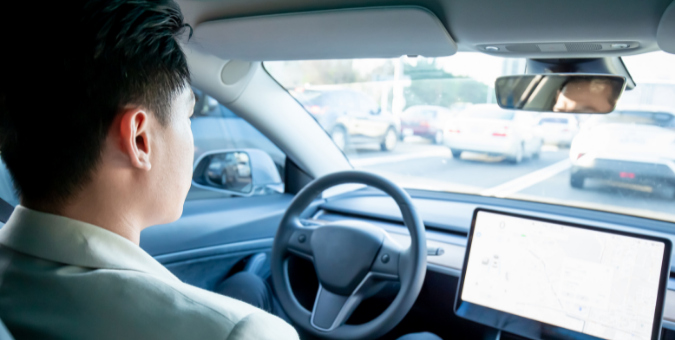
The legal responsibility for driverless vehicles was considered in the Automated & Electric Vehicles Act 2018, which simply stated that insurers are directly liable for accidents caused by vehicles driving themselves and not passengers being transported in them.
As the prospect of completely driverless vehicles on British roads moves ever closer, and limited trials are taking place in Milton Keynes, the Law Commission has been tasked with considering in great detail the issue of legal responsibility for what they term Automated Vehicles.
The Law Commission released a far-reaching report in January 2022 comprising of some 289 pages with 75 new recommendations for fully automated vehicles.
Responsibility for vehicle manufacturers
In a nutshell, the Law Commission agrees with the current position that passengers in a vehicle being operated by a fully Automated Driving System (“ADS”), as opposed to a driver support feature such as cruise control, should not be legally responsible for its actions. However, the Law Commission has recommended that under a new Automated Vehicles Act, the manufacturer should be responsible for the actions of automated vehicles and that passengers should be immune from prosecution if the vehicle were to speed, jump a red light, strike a pedestrian or crash.
The manufacturer, or Authorised Self-Driving Entity, would be responsible for putting all automated driving features and systems in a vehicle through a two stage approval and authorisation process before the vehicle was permitted on British roads.
Vehicles will need a “user-in-charge”
However, the Law Commission has recommended that all Automated Vehicles have a human passenger called a “User-In-Charge” who is qualified to drive and is able to take over in the event of a problem. It is stressed that the User-In-Charge would not need to be actively monitoring the vehicle or what is happening on the road ahead, but would need to be ready to take over after a reasonable time, called the Transition Period, if the Automated Driving System encounters a problem and makes a “Transition Demand” for the human to take over. The Law Commission has stressed that the User-In-Charge would have no legal responsibility until after the expiry of the Transition Period.
The User-in-Charge would remain responsible for maintaining and insuring the vehicle, checking all loads are secure before setting off, ensuring all children are wearing seat belts and exchanging details in the event of a collision.
Not all vehicles will need a driver
Some vehicles, such as those used for public transport, may be authorised to drive themselves without a User-In-Charge, and in that situation a licensed “No-User-In-Charge Operator”, in a remote location, would monitor the vehicle. The Operator would need to respond to alerts from the vehicle and ultimately take responsibility if something goes wrong.
The Law Commission has also recommended that a Regulator be established to determine fault in the event of a collision involving an Automated Vehicle and that the Regulator be given powers to apply sanctions such as fines or Compliance Orders to the manufacturer in the event of a fault with the system design. A recommendation has also been made that an Independent Collision Investigation Unit be set up to investigate complex collisions involving a number of Automated Vehicles.
The future is (not quite) here
Sadly, the dream of being able to have a few drinks and get your vehicle to take you home in place of a taxi must stay in the realms of fantasy, as the Law Commission states that the User-In-Charge must be fit to drive at all times! Similarly, if you have hopes of sitting back and letting the vehicle take the strain whilst watching your favourite Netflix series or taking a nap then forget it, as the Law Commission has also recommended that the User-In-Charge should not be allowed to use a mobile, screen device or go to sleep!

















